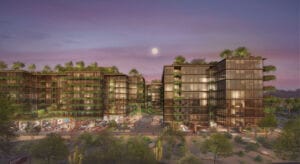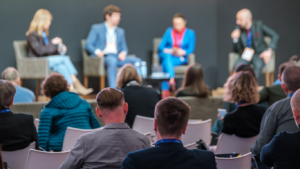It was what one expert called “the mother of all booms.”
Just over a decade ago, Arizona’s construction industry was leading the country in residential and commercial building. People were waiting up to a year for a house, even as builders were throwing new homes up on spec for the residents who were flocking to the state.
And then it was over.
The housing bubble burst and the so-called Great Recession hit in 2007, leaving builders with unfinished properties and no buyers. Arizona saw the “steepest decline” in construction jobs in the nation, as the state shed more than half its 240,000 jobs before bottoming out in 2011.
“Arizona is a state that tends to operate at extremes,” said Ken Simonson, chief economist for the Associated General Contractors of America.
While the recession lasted longer and was worse on the state’s construction industry than any downturn since World War II, builders have slowly clawed their way back. Permits for new homes are up, commercial vacancy rates are down and contractors face a new challenge – not enough workers to fill the jobs needed.
The industry is not yet back to where it was, but it’s better off. Now experts wonder where the ceiling will be this time.
“The new normal is the big question,” said Greg Burger, president of RL Brown Housing Reports, which specializes in residential market research.
The Great Recession officially began in December 2007 when the economy peaked after a 73-month period of expansion, according to the National Bureau of Economic Research.
Arizona’s construction industry saw its highest peaks in April 2006, according to Simonson, citing the Bureau of Labor Statistics. The market quickly declined until it hit rock bottom in 2011, by all measures – two years after the government said the rest of the economy had started its slow turnaround.
The depths of the recession for construction in Arizona saw new permits at historic lows, vacancies in existing buildings at their highest and a shrunken labor force.
“We saw a lot of people cutting expenses very quickly, getting rid of overhead and staff as fast as they could in order to survive,” said Mark Minter, president of the Arizona Builders Alliance.
Elliott Pollack, an economist and real estate consultant in Scottsdale, said the decisions builders were making before the recession hit made sense at the time.
“If you just looked at the numbers and you didn’t anticipate the type of recession that occurred – and very few people did – you were able to justify the new construction,” Pollack said. “People were building in anticipation of rooftops that never got built.
“The problem was that nobody anticipated the depth of the recession,” Pollack said. “Therefore, you had all this stuff that was in the building stages when the recession hit, and it took a while to turn that off. And then, of course, you can’t close down a half-done building. You have to finish it.”
It wasn’t until 2012 that the industry began to improve, as indicated by measures including increases in the numbers of approved residential permits from across the state. These increases, while slight, were “an indication of the builders coming back off life support,” Burger said.
Since 2012, the state’s “recovery has been somewhat uneven,” Simonson said.
Pollack said that “population and employment growth were both weaker than anything Arizona, and greater Phoenix for example, had ever experienced.”
Arizona continued to see population growth, even during the recession, and in 2016, Maricopa County was the fastest-growing county in the United States, the Census Bureau said.
While some forecasters thought that the Arizona market would skyrocket back up, Burger said he tries to provide a more realistic forecast for residential housing.
Burger does not think the number of construction
jobs will get as high as it was right before the recession. But he does think residential home growth will be healthy and steady, thanks to this population growth and to homebuilders adjusting to a changing market that includes new buyers – like millennials.
And Pollack said that the three main categories of the commercial market – industrial, office and retail – are all doing better than they were during the recession. Retail is the weakest of the three, but Pollack said that’s because retailers face intense internet competition – and because some retailers are just “crappy.”
Simonson said he expects growth to be “more of the same.”
“We will have growth, but it will be spotty,” he said. “Not nearly as strong as the … decade before the recession hit.”
Minter said he’s now more worried about workers than work.
“There’s plenty of work,” he said. “Now our concern is, can we find people to do it?”
Burger agreed, saying that the labor void created when the recession drove workers away is catching up to builders now. Simonson said that Arizona added 3,000 workers from last October this one, but he said it’s just a minor bump in the overall workforce.
The shortage of construction workers is a national problem that started around 20 years ago, Simonson said. But while the national construction workforce is about 10 percent below peak, he said, Arizona is 40 percent below.
Minter said Arizona builders are looking at recruiting from everywhere.
“We’re looking at everything from returning veterans to people who are just getting out of jail, who might be interested in something in our industry,” Minter said. “We’re certainly an industry that likes to give people chances.”
Despite the challenges, and some uncertainties, experts agree that Arizona’s construction industry is, in Pollack’s words, “far better off than we were when we were on the precipice of this huge decline.”
“Now, if you didn’t have the benefit of 20/20 hindsight, 10 years ago you probably wouldn’t have said that,” he said. “But given what ultimately happened, yes, you’re far better off.”




